I enjoyed art at school. My other interests were moths and birds. Maybe it was a refuge from academia and sport!
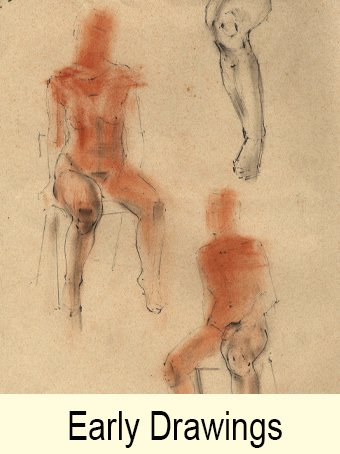
In 1973, after studying Marine Biology at Bangor university and just managing a degree, I knew I would never be happy or successful as an academic and I needed a change of direction. In September of that year I went to London and got a job as a night watchman. I worked 91 hours most weeks to save enough money, along with a small inheritance, to enrol myself in open classes for drawing and sculpture at Sir John School of Art, East Aldgate, London. It was 1974 and I was 22 years old.
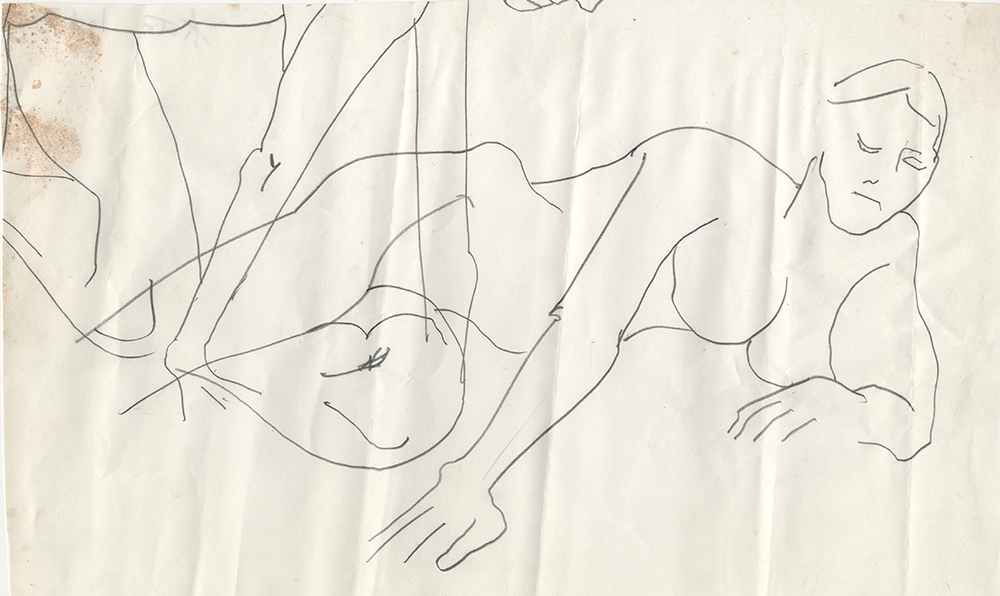
On the first day I made the above drawing of a model called Kate. The teacher, Joan Thompson, told me I had a very lively line. I was also very influenced by a Japanese friend, Yoshi, who was very keen on structure in his drawings, and pointed out my glaring weakness.
Fortunately Sir John Cass was a very good place to study as they had posed models from which students could draw from 10am until 9.0pm in the evenings. This is a drawing from about two years later. The freedom of those first drawings is gone, but a sense of structure is beginning to develop.

Over the next ten years I did a lot of drawing from life models and this is where my work was in in 1982, after six years of very hard study.
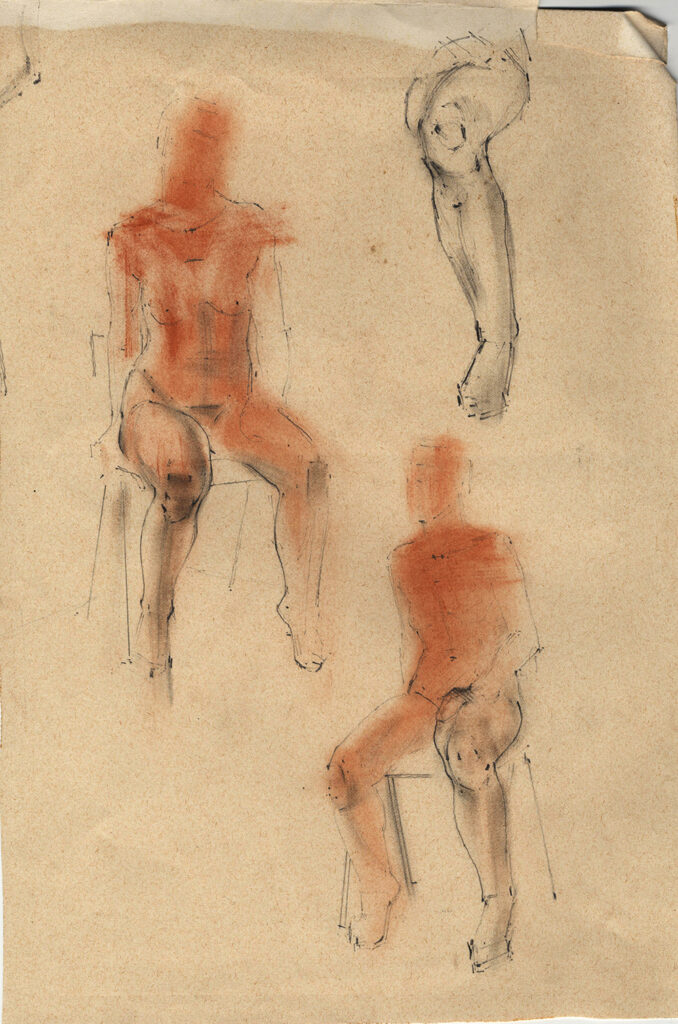
I have always regarded being able to make good structural drawings as the first step to becoming a good artist. After about 1983 I stopped going to life classes, but putting structure into my technique has remained top of my agenda for the rest of my life. Drawings from static models does not suit my temperament because the poses are unnatural and I am too impatient. My other approach to drawing has been through drawing movement, particularly ballet dancers.
I started drawing movement in the summer of 1976 after I gate-crashed open classes for dancers in ballet studios in Covent Garden. For me drawing movement was about finding and drawing rhythms and lines of force. This is one of my first drawings in a ballet studio.
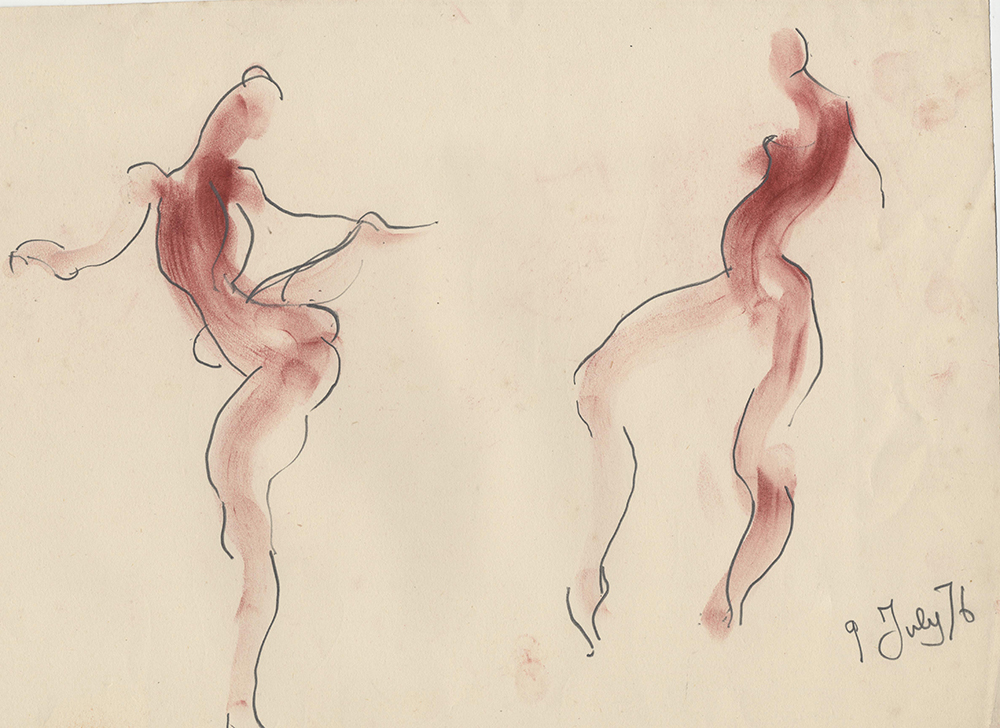
So my task, as I saw it, was to combine structure with the rhythm. Combination of these two elements have been my life’s work. Putting my early drawings in sequence I can see the integration of these two themes.
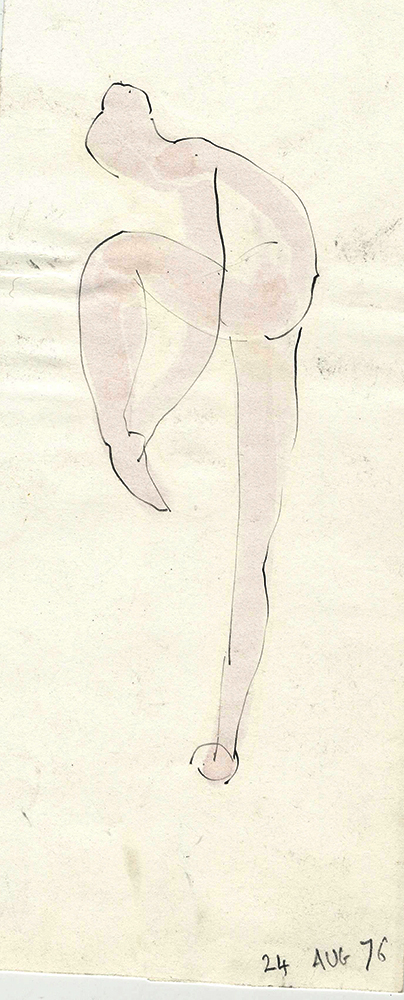
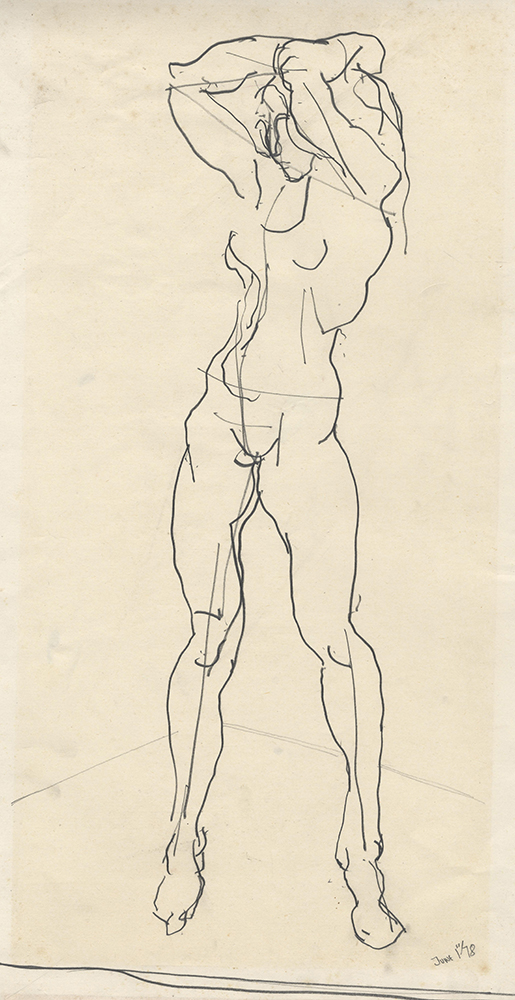
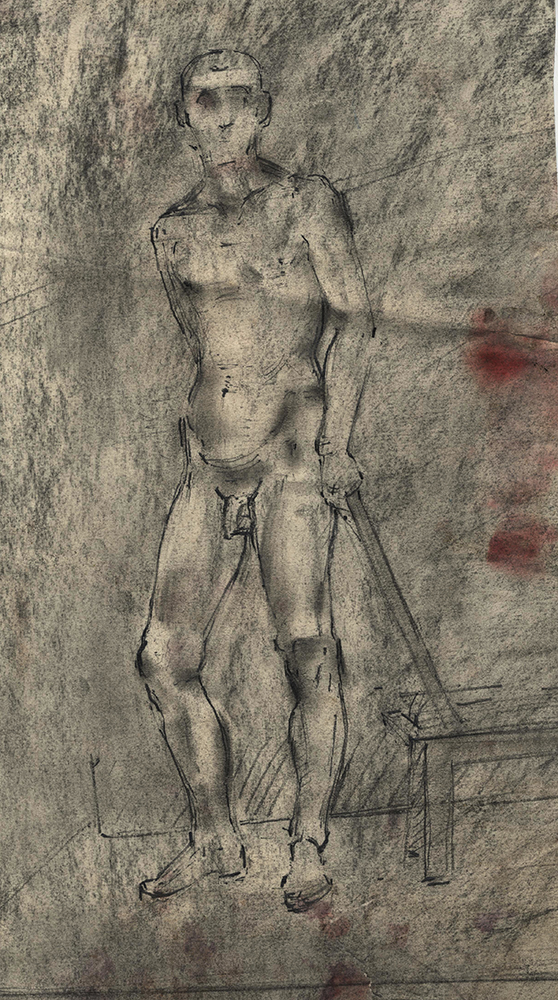
After I started to sell my etchings in 1982, and start my card business in 1986, I had less time to draw dancers. My clients wanted etchings of geese, and anyway all my time was spent preparing and selling my work, and making a living.
This is what my dance drawings looked like in the mid 1990s.
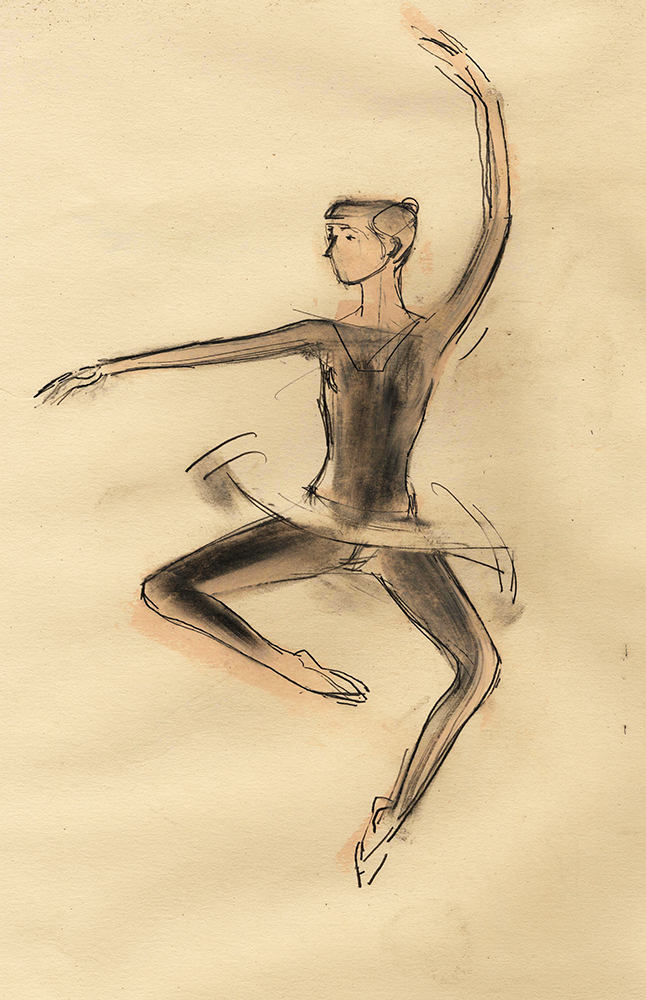
We moved to Wales in 1999 and there were no opportunities to draw dancers. this changed in 2008 when Mami started doing her exercises every evening. About this time I started reading a lot of books on neuroscience and how the mind works. This reading helped me solve some problems that had been preoccupying my mind for many years, and has had a dramatic effect on my approach to drawing dancers.

This drawing is typical of the drawing that I was doing 5 years ago. The structure and rhythm are now integrated with a new element given to me through my reading: Time
In March 2020, when covid 19 stopped our business, we began to watch ballet videos on a big screen whilst Mami was doing her exercises. We watched one video, Casanova by the Northern Ballet, again and again, maybe twenty times.
This gave me new purpose through which to develop my dance drawing. It has been a long journey to put structure, movement, rhythm into my work. I was always expecting expression to follow naturally. I think expression has at last arrived
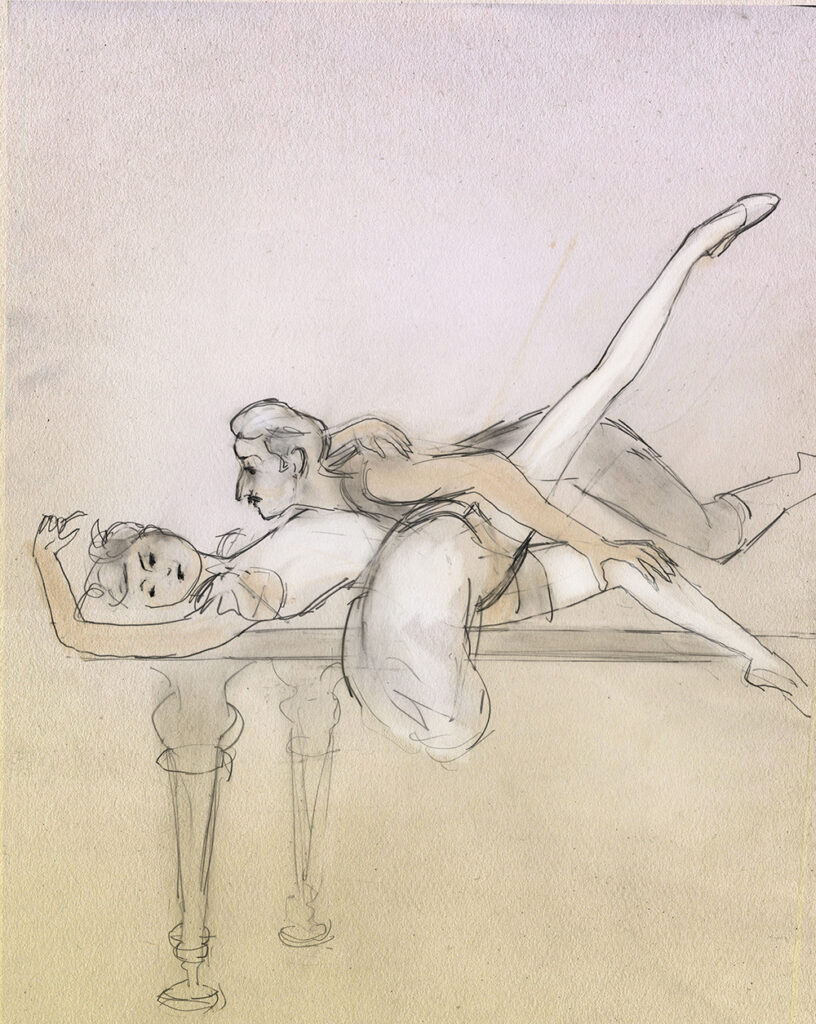
It was now time for me to use colour more freely! Colour adds impact at the same time as camouflaging structural weaknesses. Introducing colour too early would have stunted my development which is why I am only beginning to use colour at the end of my life.
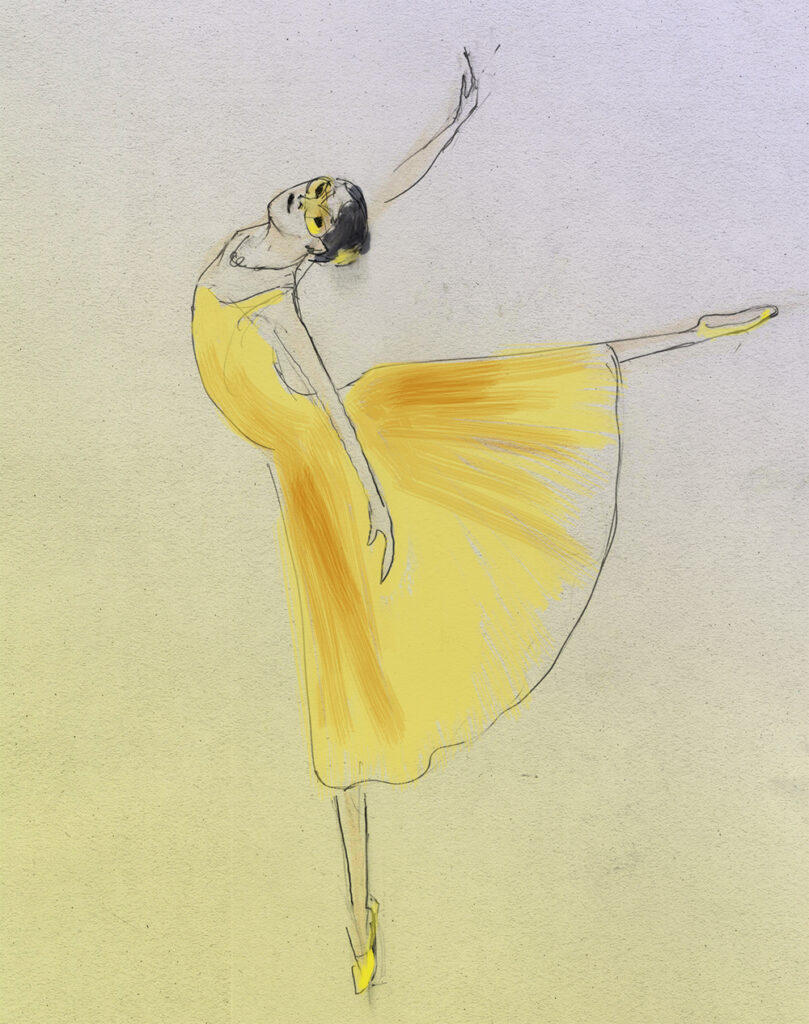
My life, since those days when I understood my drawing was structureless, has been one long battle to strengthen my weaknesses. My latest drawings are very colourful and very free. I do not have to think about structure, it is always in the drawings
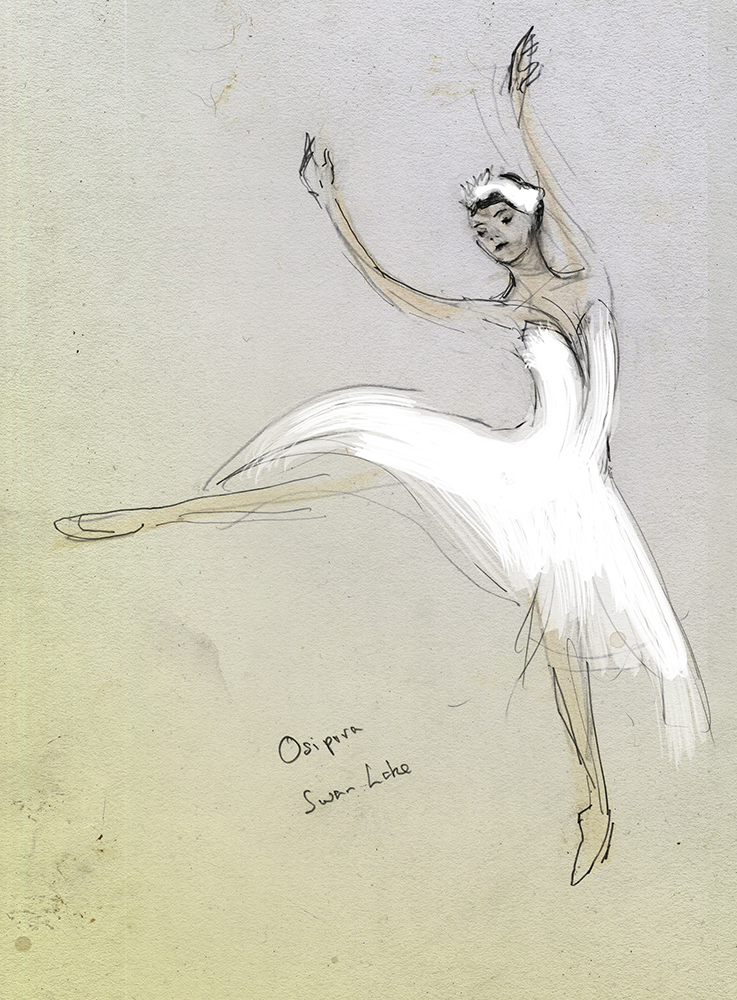
I have this feeling I have reached the beginning of my artistic career, and everything is in front of me. It a nice feeling to have so late in life.
